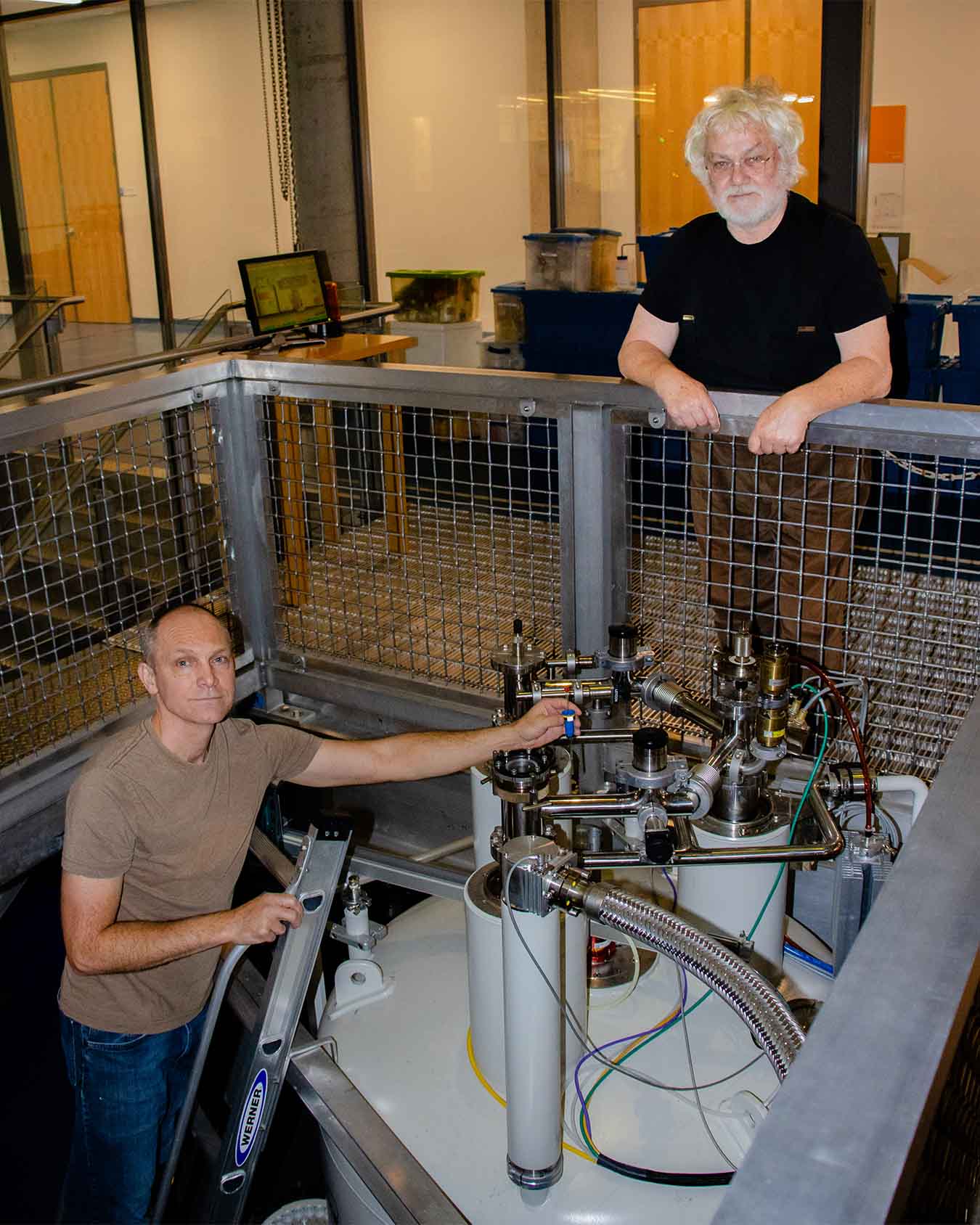A pair of grants from the Offices of the Provost and the Dean for Research (DfR) will transform materials science, synthesis, catalysis and chemical biology research across campus through the acquisition of a powerful new Nuclear Magnetic Resonance (NMR) spectroscopy tool and an extensive facility upgrade, headed for the Department of Chemistry.
The tools will be funded through the Transformative Equipment Initiative announced last year to support the purchase of shared facilities.
Signaling a strong investment in the natural sciences, the grants are among the first approved under the Initiative. See the full list of awardees on the DfR website.
Under one grant, the Princeton Materials Institute will acquire a state-of-the-art solid-state NMR tool with DNP-based Sensitivity Enhancement to be housed and maintained at Frick Laboratory. Current facilities require that samples be in a liquid state only. This new machine dramatically expands campus NMR capabilities.
Under the second grant, the Department of Chemistry will receive an extensive modernization of its NMR Core Facility and a new specialty tool, replacing technology that is almost two decades old.
Together, the facilities will solidify Princeton’s reputation as a leader in analytical characterization techniques.

Frick Laboratory’s Kenith Conover (left) and István Pelczer will oversee and maintain the new Nuclear Magnetic Resonance (NMR) upgrades.
“These tools are exactly the reason we created this initiative — for acquisitions that advance our shared research ambitions,” said Pablo Debenedetti, Princeton’s dean for research and the Class of 1950 Professor of Engineering and Applied Science.
“Faculty, grad students, postdocs, and undergrads from departments and centers all over campus will have access,” he said. “The tools will be housed at Princeton Chemistry but available to all our researchers, establishing new synergies and promoting innovation in ways we are not yet able to foresee. That’s what transformation is all about.”
István Pelczer, director of the Princeton University NMR Facility, said: “These new technologies are extraordinary. It not only means we’ll have better technology and faster experiments, but it will bring to Princeton a new group of researchers who understand that this is top-of-the-line technology.”
The breakthrough NMR machine, a Bruker 400 MHz ssNMR, will allow researchers to investigate the structure, condition and dynamics of samples at atomic resolution primarily in solid state, an essential tool for materials science, molecular biology, and catalysis. The add-on DNP (for dynamic nuclear polarization) device will vastly improve magnetic resonance sensitivity. It will also accelerate the speed of experiments researchers can perform. For example, analyses that might previously have taken months could be completed in just a few days.
Chemistry’s NMR upgrade, including new electronics, specialty instruments, and new generation of autosamplers for four instruments, will offer greater opportunities to the dozens of research groups that will use it to analyze the identity, structure, and dynamic behavior of molecules. A high-power diffusion add-on device will open a whole new chapter for mixture analysis of both very small individual ions and very large polymers and nanoparticles.
A ‘crucial’ campus-wide tool
Marcella Lusardi, an assistant professor in the Department of Chemical and Biological Engineering, called the new ssNMR tool “crucial” to her research.
“The research in my group focuses on designing advanced catalytic materials to solve complex challenges in sustainable chemistry,” she said. “Designing these materials requires molecular-scale insight into the ways that materials surfaces are organized, and the ways those surfaces interact with molecules during catalytic processes. Solid-state NMR techniques capture such molecular-level information quantitatively, enabling fundamentally new correlations that guide rational materials design.”
The funding initiative focused the energy of several entities, including the Princeton Materials Institute, the Department of Chemistry, and the Department of Chemical and Biological Engineering. Leadership sought technology that has been “a strong need” at Princeton for years, according to Craig Arnold, Princeton’s vice dean for innovation.
“This ssNMR tool is another example of the incredibly positive benefits that can be realized on this campus when different entities work collaboratively toward a larger goal,” Arnold said.
He was instrumental in landing the grant in his former role as director of the Princeton Materials Institute and worked closely with Greg Scholes, chair of the chemistry department, in crafting a cost-sharing agreement.
“Almost seven years ago, the Princeton Materials Institute and the Department of Molecular Biology came together to bring Cryo-EM to our campus, and the impact of that has been tremendously positive,” said Arnold. “I have no doubt that this tool will similarly enable new science, new technology, and new collaborations to blossom and grow on this campus.”
John Groves, who holds the Hugh Stott Taylor Chair of Chemistry, wrote the proposal for the replacement of the NMR instruments at Frick and determined, together with Pelczer, the optimal package for the current and future needs of user groups.
“This purchase will give us four new instruments that will allow much better spectroscopy even on vanishingly small samples such as proteins and important natural products,” said Groves. “These new instruments will also allow a raft of new types of so-called hyphenated techniques. In some ways these capabilities are similar to MIMO (multi-in, multi-out) technology that is part of new 5G cell phone systems.”
He added: “The new instruments will collect better data in shorter times and facilitate the nearly autonomous 24/7 operation our users really need.”
When installation is complete, which should be later this year, Pelczer and NMR Coordinator Kenith Conover will organize an open symposium to introduce the technology to researchers.




